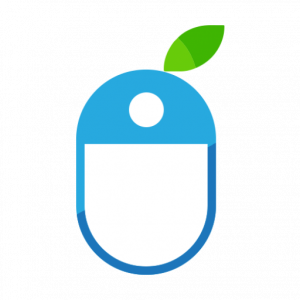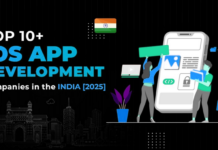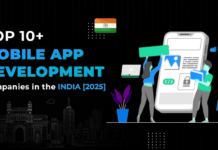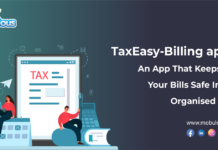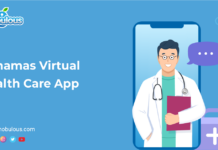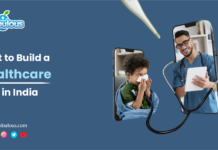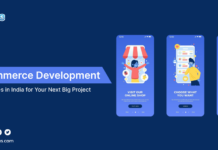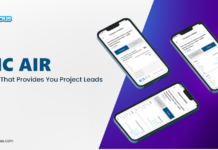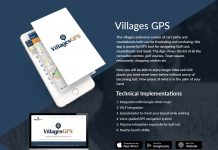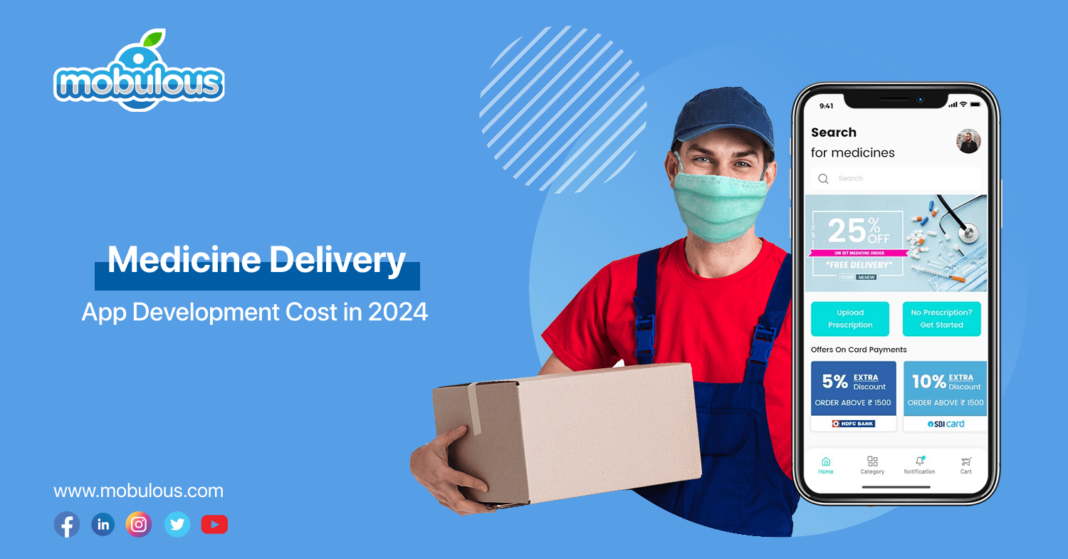Medicine Delivery App Development Cost
Medicine delivery app development costs deviate from USD 10,000 to USD 300,000 and even more relying on multifarious elements, including the complicatedness of the app, features added, etc. Medicine delivery apps have become fundamental today as they deliver unpaired comfort that encourages users to order medicines from the amenities of their homes.
Well, the multinational online pharmacy sector is expected to develop at a CAGR of around 17.83% from 2021 to 2028, accumulating almost USD 210.35 Billion by the end of 2024. Consequently, industry leaders have found this prospect promising and are looking ahead to sponsoring medicine delivery app development.
If you are among these specialists and investigating medicine delivery app development costs and seeking to know how much does it cost to develop an app for pharmacy, then this blog is for you. Let’s dive into the components and analyze the cost and costs involved.
For Query: Mobile App Development Company!
Understanding Medicine Delivery Apps
A medicine delivery app is a mobile application that authorizes users to order prescriptions and medications online. These apps connect users with local pharmacies and deliver prescriptions right at their doorsteps, usually within a few hours.
Mobile app development companies are transforming the healthcare industry by including components like user registration, prescription upload, medicine search, real-time order tracking, notifications, and protected payment options in their medical applications.
However, advanced versions may incorporate telemedicine services and AI-driven recommendations. These instant medicine delivery apps provide multiple advantages to users, including convenience for users, accessibility & time-saving, and improved Pharmacy reach.
Medicine Delivery App Development Cost
The cost of medicine delivery app development may deviate from USD 10,000 to USD 300,000 or even more and is affected by various elements such as app complexity, design, feature set (user registration, real-time tracking, and secured expenditures), and platform alternatives (Android, iOS, & Web).
The stages for making a medicine delivery app include planning and ideation, UI/UX design, coding, testing, and deployment. Nevertheless, the price of medicine delivery app development also counters by region, with North America being the most costly whereas Asia-Pacific is the most affordable, reasonable, and budget-friendly.
Post-launch costs and expenses like supervision and marketing further add to the general cost of the pharmacy app development. Typically, a primary medicine delivery app development cost ranges between USD 10,000 to USD 15,000 whereas a complicated app with complex features may surpass USD 300,000.
Factors Influencing Medicine Delivery App Development Cost
The price to create a medicine delivery app is impacted by eclectic aspects, including app complexity, design, platform choice, development team, location of the app development company, maintenance needs, and compliance with security regulations.
1. App Complexity and Features
The cost increases with the number of features, including secure payments, AI integration, and real-time tracking. Complex features need more time and expertise to be developed which propels the medicine delivery app development cost.
2. Design and User Experience
A top-quality, user-centric design improves user retention, engagement, and satisfaction but needs significant investment in UI/UX design, affecting the overall cost of medicine delivery app development.
3. Platform Choice
Building pharmacy apps for both Android and iOS costs more than a single platform. While pricier, targeting various platforms widens your user base, providing an extensive market reach.
4. Medicine Delivery App Development Team
Freelancers, in-house teams, and healthcare app development companies have multiple cost implications. Companies usually charge more but offer an extensive range of medicine delivery app development services, whereas freelancers can be cheaper but less detail-oriented.
5. Location of the App Development Company
The cost of medicine delivery app development differs worldwide. North America is the most costly country and their costs range from USD 100 to USD 250 per hour. Nevertheless, Asia-Pacific offers a more reasonable and affordable cost that varies between USD 20 to USD 25 per hour, without compromising the quality of the app.
6. Maintenance and Updates
Regular maintenance and updates ensure that your medical app remains functional and secure, adding 15 to 20% of the initial medicine delivery app development cost yearly to the overall budget.
7. Security and Compliance
Security and compliance features ensure that your top healthcare apps meet data security standards and yields with healthcare ordinances require significant investment in secure coding practices and regular audits. This adds to the medicine delivery app development costs.
Key Features Affecting Medicine Delivery App Development Cost
Various key features affect the cost of medicine delivery app development, enhancing functionality and user experience but require significant investment in app development and security measures. Therefore, these healthcare apps are highly important for hospitals and patients.
1. User Registration and Profiles
Executing protected and user-centric registration and profile management approaches is important for personalized user experiences. This feature requires strong and potent backend development and data security measures. This increases the cost of medicine delivery app development.
2. Medicine Search and Filters
A sophisticated search function with filters in medicine delivery apps enables users to find specific medicines quickly. This feature involves intricate algorithms and a perfectly organized database that adds up to the app’s development time and cost.
3. Secure Payment Gateways
Incorporating secure payment gateways guarantees safe transactions. This mandates adherence to financial regulations and the enactment of encryption technologies, particularly affecting app development costs.
4. Real-Time Tracking
Real-time order tracking improves user experience by delivering live updates on delivery status. This feature comprises GPS integration and consistent data synchronization, which boosts the app development sophistication and costs.
5. Notifications and Alerts
Executing push notifications and alerts keeps users informed about order status, offers, and reminders. This is a crucial feature that requires a reliable notification system and server setup, adding to the app development expenses.
6. Prescription Upload
Prescription upload is one of the advanced features of medicine delivery app development that enables users to upload prescriptions for verification, ensuring compliance with legal requirements. It involves secure file upload and storage systems, as well as image recognition technologies, thus contributing to the higher cost of medicine delivery app development.
Medicine Delivery App Development Cost As Per the Development Stages
Understanding the cost of building a medicine delivery app development requires examining each stage of app development. Each phase, from planning to app launch, contributes perfectly to the overall budget. Let’s understand this in a comprehensive way.
1. Planning and Research
The initial stage is planning and research which involves market research, extensive planning, and feasibility studies. This stage is important for setting a robust foundation and can account for 10% to 15% of the overall cost.
2. Design and Prototyping
Building design prototypes and wireframes ensures the app’s layout and user interface fulfill user expectations. This stage generally involves 15% to 20% of the overall medicine delivery app development cost.
3. Development and Coding
The crux development phase contains backend and frontend coding and is deemed the most consequential cost-driving energy that accounts for 40% to 50% of the general cost of the pharmacy app development.
Also Read:- Bahamas — An Healthcare App That Connects You With Professional Doctors Online!
4. Testing and Quality Assurance
Rigorous testing guarantees that your medicine delivery app is unrestrained from bugs and functions nicely under considerable constraints. This stage takes up 15% to 20% of the overall medicine delivery app development cost.
5. Deployment and Launch
Deploying the mobile app to the App Stores (Apple App Store/Google Play Store) and handling the procedure for deploying the app takes up to 5% to 10% of the general medicine delivery app development cost.
Choosing the Right Medicine Delivery App Development Team
Choosing the suitable medicine delivery app development team is essential for creating a triumphant pharmacy app. Your preference between in-house teams, freelancers, or healthcare app development companies commonly influences the cost, quality, and timeline of your app.
- In-House Development: Creating an in-house team provides comprehensive management and immediate supervision. Nevertheless, it can be costly because of wages, advantages, and infrastructure.
- Outsourcing to Companies: Outsourcing to skilled and proficient healthcare app development companies can be cost-effective as their talented team fetches expert dexterities. However, it requires careful selection and management.
- Freelancers vs. Companies: Employing freelancers can be more affordable but lacks the dependability and a comprehensive skill set that companies provide. App development companies offer a more structured technique but at a higher cost.
Medicine Delivery App Development Cost Breakdown by Region
The cost of medicine delivery app development differs by region. Comprehending these regional disparities helps in budgeting efficiently and selecting the best location for pharmacy app development.
- North America: Medicine delivery app development costs in North America are expensive because of the highest labor cost. It generally ranges from USD 100 to USD 250 per hour.
- Europe: Western Europe provides quality development services at lower expenses when compared with North America. It ranges from USD 70 to USD 150 per hour. Eastern Europe is even more budget-friendly than Western and it ranges from USD 30 to USD 80 on an hourly basis.
- Asia-Pacific: Asia-Pacific countries like India and Vietnam provide the most cost-effective rates that range from USD 20 to USD 25 on an hourly basis, without compromising on quality of the app.
Also Read:- How Much Does it Cost to Develop an App?
Timeframe for Medicine Delivery App Development
Medicine delivery app development generally takes 4 to 15 months based on the complexity and feature set.
Factors like the number of features, platform choice, and the expertise of the app development team can affect the overall timeline of the app development.
More complex applications or different platform support can extend the time of medicine delivery app development, thus increasing the cost of development.
Post-Launch Medicine Delivery App Development Cost
Regular maintenance and updates are important for keeping the app secure and up-to-date. This accounts for 15% to 20% of the initial medicine delivery app development cost on a yearly basis.
However, investing in marketing and user acquisition strategies and techniques is important for reaching a broader audience and ensuring the success of the medicine delivery app.
Tips to Reduce Medicine Delivery App Development Cost
Reducing medicine delivery app development costs is important in order to make app development affordable and budget-friendly. Let’s understand how you can reduce the cost of a medicine delivery app perfectly and seamlessly.
1. Start With a Minimum Viable Product (MVP)
Concentrate on crucial features first in order to launch your app quickly and seek user feedback. This approach lessens initial costs and enables you to prioritize future app development depending on actual user needs and requirements.
2. Leverage Pre-Built Solutions and Templates
Use pre-built modules and existing templates for standard features, saving the time and cost of the app development in order to build everything from scratch while still delivering a substantial foundation for your mobile app.
3. Outsource to Cost-Effective Regions
You must consider outsourcing app development to regions with lower labor expenses like Asia-Pacific. This area is highly affordable and offers professional app developers at a fraction of the cost compared to North America or Western Europe.
4. Hire a Versatile Medicine Delivery App Development Team
Make sure to hire a medicine delivery app developer with a wider skill set that can handle and manage various prospects of the project. This lessens the requirement for additional professionals and streamlines project management and communication.
5. Execute Agile Development Methodology
Leverage Agile development methodology in order to break the project into smaller and manageable tasks, enabling iterative enhancements and better control over the budget, as you will be able to adjust priorities and resources as mandated.
6. Concentrate on Core Features
Prioritize crucial features that provide the most value to the users. Make sure to avoid unnecessary features/functions that complicate the development process and boost costs without seriously improving user experience.
7. Regularly Review and Optimize
Review the development process continuously and identify areas for optimization. Analyzing your progress regularly assists in catching potential issues early and adjusting plans in order to stay within the budget.
8. Negotiate with App Developers
Negotiate and discuss with medicine delivery app developers in order to find cost-effective solutions. Clear communication about budget constraints and project expectations can lead to mutually beneficial agreements.
9. Leverage Open-Source Software
Incorporate open-source tools and libraries where possible. These are able to provide strong solutions at no cost, lessening the requirement for custom development and saving time.
10. Plan for Scalability
Design the app architecture to scale effectively. Planning for future growth can avoid expensive overhauls and ensure that the mobile app can manage to boost user demand without significant additional investment.
Final Talk
Medicine delivery app development involves multiple factors from the complexity of features to the choice of development team. While costs may differ widely, comprehending these components can assist in making informed decisions and optimizing investment.
With the right medicine delivery app development approach, your app development can be a profitable experience as it offers immense convenience and accessibility to users and the newest possibilities for pharmacies.
FAQs — Medicine Delivery App Development Cost
Q. How much does it cost to develop a medicine delivery app?
Ans. The online medicine delivery app development cost for Android and iOS will cost you more than the cost of developing it for a single platform. Building an app on the iOS platform costs approximately between USD 25,000 to USD 70,000. However, developing an app for Android platform will cost you around USD 10,000 to USD 45,000.
Q. Which app is good for medicine delivery?
Ans. The concept of medicine delivery right at your doorstep has been taken to a new level by the PharmEasy app. You are able to use the app free of cost and browse through a wide range of medicines over the app.
Q. How to develop a medicine delivery app?
Ans. In order to develop a medicine delivery app, make sure to follow the below steps carefully:
- Identify the target market and competitors.
- Decide on the business model.
- Find a medicine delivery app development company.
- Finalize app functionality.
- Test and deploy the app on the App Stores (Apple App Store/Google Play Store).
Q. How much does healthcare app development cost?
Ans. The average cost of building a healthcare app generally ranges between USD 40,000 to USD 200,000. However, it is important to note that this is a generalized figure, and the actual cost differs significantly across various categories of healthcare applications.
